|
|
Print this review
Computex 2006 – new models on platform Windows Mobile
At the Asian’s largest exhibition all major attractions were gathered in Microsoft’s booth, nevertheless a few of them were still scattered about other manufacturers’ stands. The Computex 2006 featured only a few developments powered by operating systems other than Windows Mobile, and it’s quite clear, since the biggest share of gadgets running WM are produced in Taiwan, as most of manufacturers are focusing exactly on this OS.
This year’s exhibition saw several newcomers, like Lite-On, Inventec. And apparently the list will soon hit 50 producers and but, though yet there were only 47 of them representing their newest solutions: Acer Inc., Anubis Electronic GmbH, ASUSTek Computer Inc., BenQ, Brunswick New Technologies Inc., Casio Computer Co. Ltd., Cesscom Co. Ltd., Chi Mei Communication Systems Inc., Compal Electronics Inc., Creative Technology Ltd., Cyberbank Corp., Dallab Sdn Bhd, Dell Computer Corp., Dongguan INIT Technology Co., Ltd., Dopod International Corp., Eten Information Systems Co. Ltd., First International Computer, Inc., Flextronics, Freedom Scientific Inc., Fujitsu Ltd., Fujitsu Siemens Computers GmbH, Garmin International Inc., Hand Held Products Inc. (HHP), Hewlett Packard Co., High Tech Computer Corp. (HTC), Infinity System Inc., Intermec Corp., Itronix Corp., Kinpo Electronics Inc., Lenovo Mobile Communications, LG Electronics, Matsushita Electric, Medion AG, Mitac International Corp., Motorola, NEC Corp., Palm Inc., Pantech Co., Psion Teklogix Inc., Reigncom Limited, Sagem SA, Samsung Electronics Co. Ltd., Sharp Corp., Siemens Ag, Symbol Technologies Inc., TCL Communications, Toshiba, Trimble Navigation Ltd., UTStarcom, ViewSonic, Vobis Microcomputer AG, Wistron. Despite the list being too long, the companies which do manufacture gadgets are not so many – we also mentioned some brands, not producing anything on their own.
Talking about events involving Windows Mobile, which took place behind the scenes at Computex, there were a couple of really exciting ones. The leadership in WM-armed devices is still clamed by HTC (High Tech Computer). After HTC’s announcement on taking over Dopod (this brand distributed HTC’s production in China and Taiwan), the company’s shares went down. The investors fear that the transaction may negatively affect HTC’s operators-related business (the corporation manufactures specialized solutions for certain operators, which re-brand them and retail afterwards). Tatung didn’t manage to master the problem of creating a reliable inexpensive device and thus shut down its mobile division. It is intensively rumored on the Taiwanese market that Foxconn (the largest ODM/OEM manufacturer) is planning on releasing communicators of its own.
Let’s start with standard PDA, which are loosing their numbers with every passing day, but have not yet disappeared from the shelves. In course of the exhibition we spotted two new handhelds running Windows Mobile.
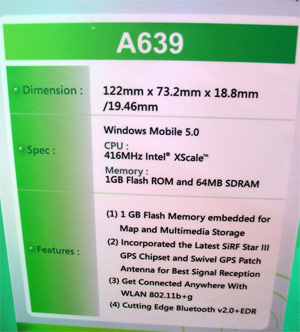

Asus MyPAL A639 differs from the predecessor – model Asus MyPAL A636, but only a little The peculiar features are as follows:
- Bundled 1 Gb of flash memory;
- Changed front panel’s appearance;
- Upgrades concerning wireless connectivity: Wi-Fi (IEEE 802.11g), Bluetooth 2.0 + EDR.
MiTAC has chosen the same way and introduced its Mio P550 with 1 Gb of bundled memory – this model had been featured earlier at CeBIT 2006.







And the last PDA for today - Mio PT200 by MiTAC. This model is notable for its VGA screen, built-in hard drive, a ÒÂ DVB-T receiver (pay attention to it being a T version, no the mobile one, going by the name of H). “Quite impressive” – you may think, but that’s before we reveal its weight – 370 g. It’s way too much for a PDA or a multimedia player even. As for the other specifications, these are:
- Operating system: Windows Mobile 5.0;
- Display: 3.7” TFT LCD, 65 K color, resolution– 640x480 pixels;
- RAM: 64 Mb;
- Flash memory: 64 Mb;
- Hard drive: 1.8”, capacity – 20 Gb;
- Interfaces: SD/MMC, IrDA;
- Battery: 2400 mAh;
- Dimensions: 148.8x88.3x33.7 mm;
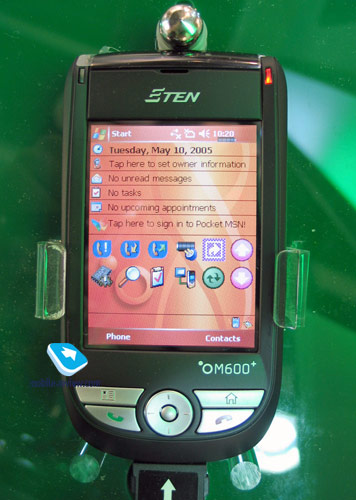
Having done dealing with PDA, let’s move on to the devices, featuring wider connectivity, namely communicators and smartphones. E-Ten announced its slightly upgraded version of E-Ten M600, which got the index of M600+. The peculiar features are:
- Bundled 256 Mb of flash memory;
- Increased camera resolution;
- Built-in Bluetooth 2.0 + EDR module.
If you want E-Ten to launch something that has never been seen before, wait for the X500.
Inventec’s booth was the place, where all the surprises started popping up – it distributes its device under OKWAP brand. In fact, the company made something based on Windows Mobile for the very first time, nonetheless these models don’t appear to be ordinary clones and possess several significant differences.

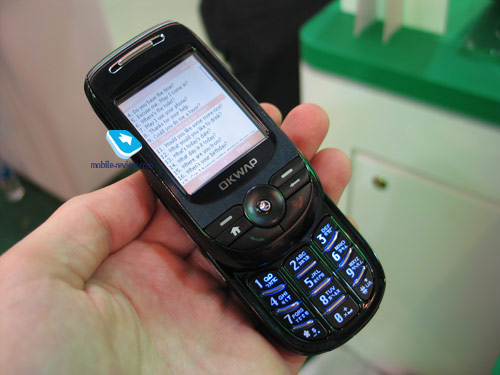


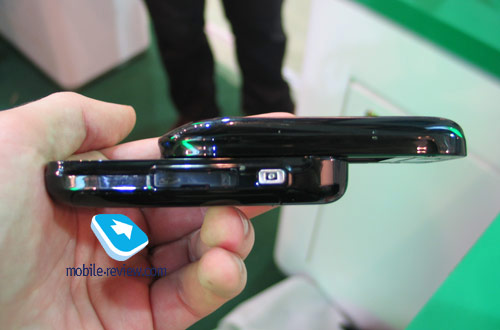
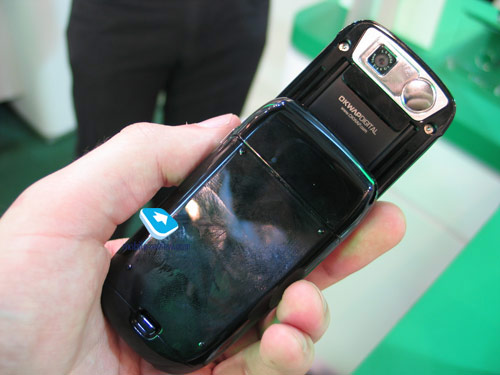

The OKWAP K728 is the first sliding smartphone to run WM for Smartphone operating system. While small, portable (93.5x46x24.5 mm, 107.8 g) and fitting in palm nicely, it boasts quite good quality of the materials used. When it is slid open, the K728 is similar to Samsung D500 in some ways. The auto-slide mechanism works fine and performs its functions quite well. The size of bundled memory – 64 Mb, RAM – 128 Mb, what is more you can always expand it by plugging in a miniSD card. The CPU found on the smartphone, namely Samsung 2442A operates at the frequency of 400 Mhz. The device also houses a 2 Mpix camera module.
The major features of the device Bluetooth ver. 2.0 with A2DP support, FM radio, a set of application for studying English language. While the operating system WM for Smartphone does not provide the possibility for incorporating a touch screen in the device, the developers managed to arm the K728 with it and therefore the touch screen found on the model may be used in several specific programs. By the way the next version of Windows Mobile is completely erasing the distinction between WM for PPC and WM for Smartphone, and leading the OS into a new stage, where it will be one and the same for all devices. The worst shortcoming of the smartphone is its display measuring only 2 inches in sizes and 176x220 pixels in resolution, while QVGA screens (240x320 pixels) have gained much popularity over the recent times. With this screen embedded in, the manufacturer may count on its solution only within the limits of the entry-level segment and on condition that its price won’t go higher than 300 USD. Another drawback, although less significant – absence of EDGE and UMTS supports with only tri-band GSM and GPRS being enabled.


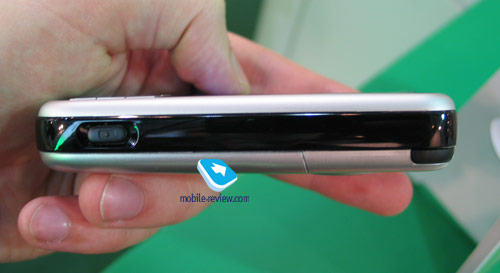


The other model introduced was OKWAP K868 – a candy-bar communicator with numeric keypad. To start with, there aren’t so many models featuring this form-factor – as far as I remember these are Anextek MoboDA 3360 and lately announced Asus MyPAL P525, and at that the K868 is much more portable (106x51x18.2 mm, weight – 100 g). The design looks somewhat fetching and no doubt differs from HTC Magician’s clones army.
CPU – Intel XScale PXA270 operating at 416 Mhz. RAM size – 64 Mb, permanent storage – 128 Mb. Expansion slot – SD/MMC, which is a major advantage, since all manufacturer are switching to miniSD and microSD formats with lower maximum capacity. Touch screen diagonal – 2.4”, resolution – 320x240 pixels. The communicator also takes advantage of a unique 2 Mpix camera showing off barcode recognition (OCR/BCR/QR 2D). A wide pack of applications for studying English language and a pre-installed mobile blog are to Inventec’s credit as well. Summarizing everything we have said above, the company has a chance to secure a considerable share of its own on the market, but only in case it applies justified pricing policy, guarantees stable work of its products and eliminates any delays concerning release dates.

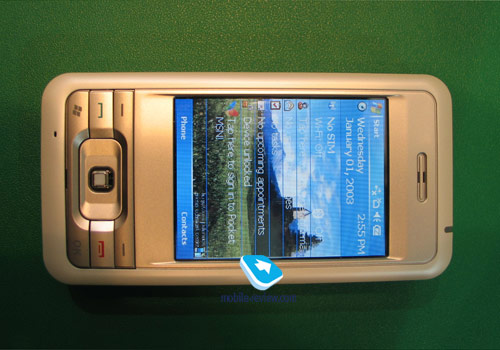
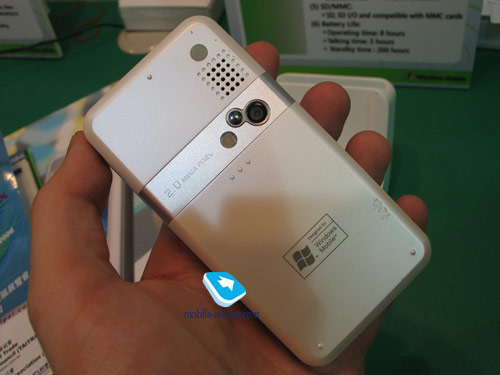




Lite-On company introduced a communicator with a temporary title at Computex 2006 Windows Mobile. Though by the time it hits the market it is likely to retain other trade marks (of course in case Lite-On will manage to find a firm interested in this design). Functionality- and appearance-wise – this is just another clone of HTC Magician, the gadget is positioned as a Wi-Fi phone with pre-installed Skype.
- Operating system: Windows Mobile 5.0;
- CPU: Intel XScale PXA270 520 Mhz;
- Display: 2.8” TFT LCD, 65 K colors, resolution – 320x240 pixels;
- Bands: GSM 900/1800/1900 Mhz, GPRS;
- RAM: 64 Mb;
- Flash memory: 128 Mb;
- Camera: 2 Mpix with flash;
- Interfaces: SD/MMC with SDIO support, USB-host, Bluetooth 1.2, Wi-Fi (IEEE 802.11 b);
- Battery: removable Li-Ion 1240 mAh;
- Dimensions: 114x58x18.7 mm;
- Weight: 149 g.
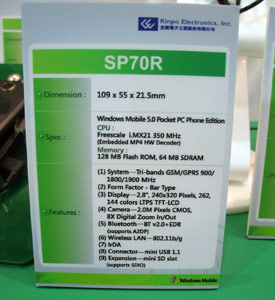

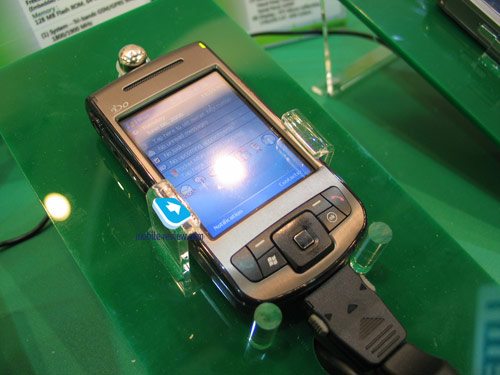
Kinpo is a relatively new player to the market of communicators. Model with Tin development index includes just a number of visual enhancements, while its hardware has remained untouched.


Model Saturn follows HTC Wizard steps and appears in the form of a side-slider, but it seems to be the only similar trait in design between these two – the internal contents are very alike:
- Operating system: Windows Mobile 5.0;
- CPU: Freescale i.MX21 520 Mhz;
- Display: 2.8” LTPS TFT LCD, resolution – 320x240 pixels;
- Bands: GSM 900/1800/1900 ÌÃö, GPRS;
- RAM: 64 Mb;
- Flash memory: 128 Mb;
- Camera: 2 Mpix;
- Interfaces: miniSD, Bluetooth 2.0+EDR, Wi-Fi (IEEE 802.11 g), IrDA;
- Battery: removable Li-Ion 1300 mAh;
- Dimensions: 126x59.4x22.4 mm;
- Weight: 195 g.
GIGABYTE Communications, previously released a communicator with a TV receiver on board, at this exhibition demonstrated two new models.



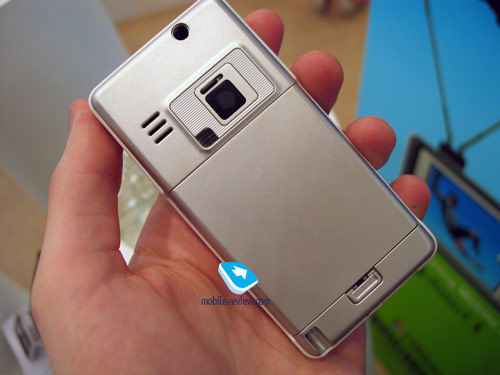
Model GIGABYTE gSmart i120 is nothing more but a modificated version of gSmart i, holding standard numeric keypad, yet with the same dimensions. The only difference functionality-wise is increased volume of built-in memory (to 256 Mb).

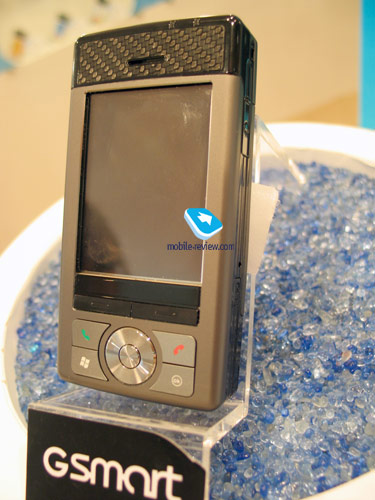


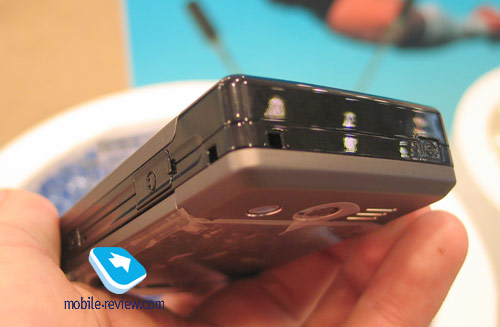
A more appealing model - gSmart i300 communicator. Generally speaking, it’s the same gSmart i, which carries a GPS receiver instead of TV/FM one. This device is known as the first navigation communicator manufactured by GIGABYTE. Technical specifications of the model:
- Operating system: Windows Mobile 5.0;
- Disaplay: 2.4” TFT LCD, resolution – 320x240 pixels;
- Bands: GSM 900/1800/1900 ÌÃö, GPRS;
- RAM: 64 Mb;
- Flash memory: 256 Mb;
- Camera: 2 Mpix, auto-focus, macro-mode;
- Interfaces: miniSD, Bluetooth 2.0+EDR, Wi-Fi (IEEE 802.11 g);
- GPS: SiRF Star III;
- Battery: removeable Li-Ion 920 mAh (1300 mAh – optionally);
- Dimensions: 102.5x51.5x19 mm.
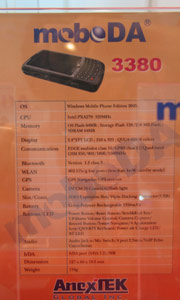





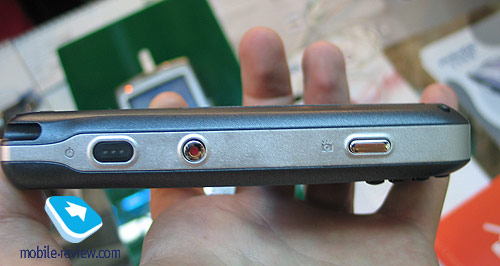
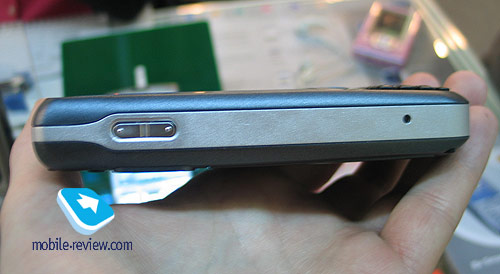

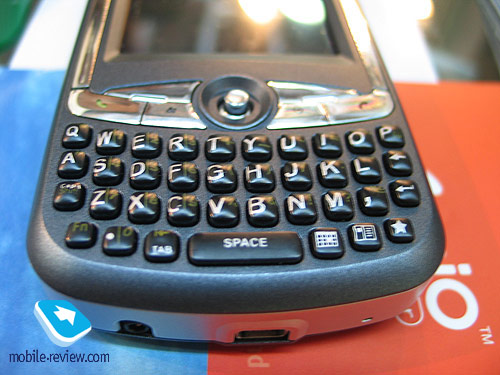
The MoboDA 3380 was already in the limelight at 3GSM, thus all we have to do is to reveal several images of the device.



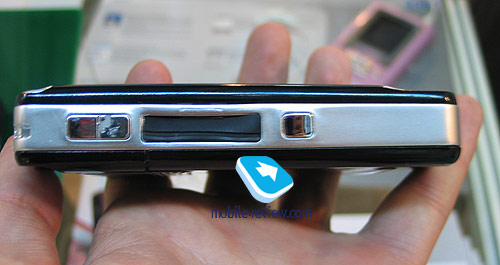



Model AnexTEK MoboDA 3160 sharply stands out against the background of HTC Magician infinite clones by featuring a bundled GPS receiver. Even though the device is still at the earliest stages of development, we already have some hints of its specs to share with you:
- Operating system: Windows Mobile 5.0;
- CPU: Intel XScale 416 ÌÃö;
- Display: 2.8” TFT LCD, resolution – 320x240 pixels;
- Bands: GSM 900/1800/1900 ÌÃö, GPRS;
- RAM: 64 Mb;
- Flash memory: 128 Mb;
- Camera: 1.3 Mpix;
- GPS;
- Interfaces: SD/MMC, Bluetooth 1.2, Wi-Fi (IEEE 802.11 g);
- Battery: removable Li-Ion 1500 mAh;
- Dimensions: 110.5x58.6x19.8 mm;
- Weight: 150 g.
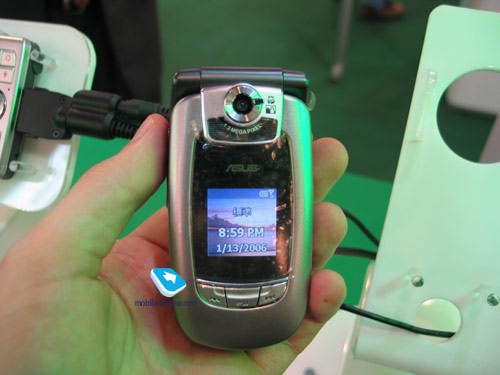



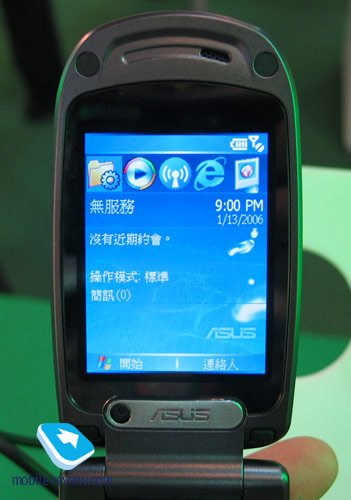

We have already noted a 3G enabled smartphone Asus P305, and it’s about time to publish its photos.
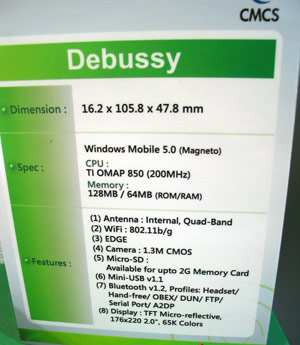

Rover will be distributing CMCS’s candy-bar shaped device.
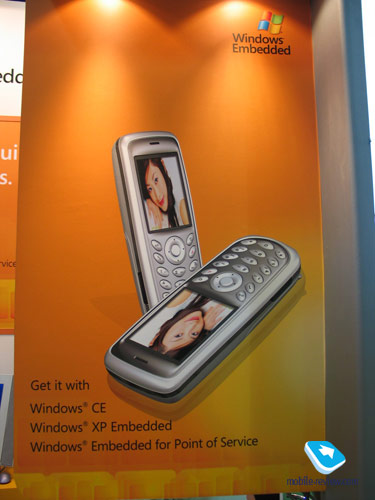
Another smartphone, this time, by BCM – regrettably we don’t have much to say about it.
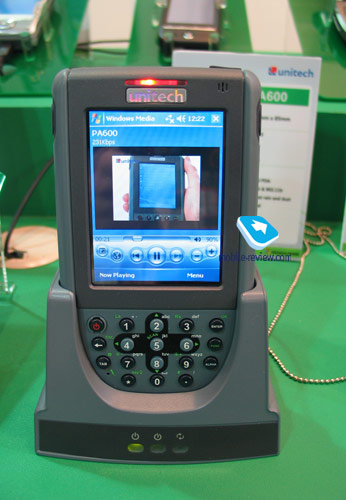
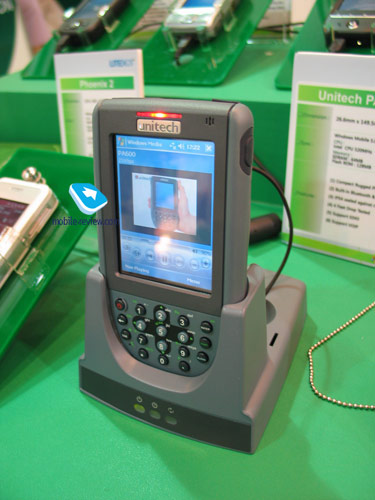
And finally, here are some photos of new Unitech’s protected PDA.
On the whole the impressions of the new models are quite ambivalent. On one hand, the new gadgets are many in numbers, and the main tendencies are easily read there: more flash memory and expansion of built-in GPS modules. However, I can’t point out a lot of really original and cutting-edge solution – lots of devices have remained pretty much the same as compared to the previous year (EDGE support, quality of built-in cameras)
Anton Kotov (eldar@mobile-review.com)
Translated by Maria Mitina (maria.mitina@mobile-review.com)
Published — 15 June 2006
Have something to add?! Write us... eldar@mobile-review.com
|
News:
[ 31-07 16:21 ]Sir Jony Ive: Apple Isn't In It For The Money
[ 31-07 13:34 ]Video: Nokia Designer Interviews
[ 31-07 13:10 ]RIM To Layoff 3,000 More Employees
[ 30-07 20:59 ]Video: iPhone 5 Housing Shown Off
[ 30-07 19:12 ]Android Fortunes Decline In U.S.
[ 25-07 16:18 ]Why Apple Is Suing Samsung?
[ 25-07 15:53 ]A Few Choice Quotes About Apple ... By Samsung
[ 23-07 20:25 ]Russian iOS Hacker Calls It A Day
[ 23-07 17:40 ]Video: It's Still Not Out, But Galaxy Note 10.1 Gets An Ad
[ 19-07 19:10 ]Another Loss For Nokia: $1 Billion Down In Q2
[ 19-07 17:22 ]British Judge Orders Apple To Run Ads Saying Samsung Did Not Copy Them
[ 19-07 16:57 ]iPhone 5 To Feature Nano-SIM Cards
[ 18-07 14:20 ]What The iPad Could Have Looked Like ...
[ 18-07 13:25 ]App Store Hack Is Still Going Strong Despite Apple's Best Efforts
[ 13-07 12:34 ]Infographic: The (Hypothetical) Sale Of RIM
[ 13-07 11:10 ]Video: iPhone Hacker Makes In-App Purchases Free
[ 12-07 19:50 ]iPhone 5 Images Leak Again
[ 12-07 17:51 ]Android Takes 50%+ Of U.S. And Europe
[ 11-07 16:02 ]Apple Involved In 60% Of Patent Suits
[ 11-07 13:14 ]Video: Kindle Fire Gets A Jelly Bean
Subscribe
|






































































